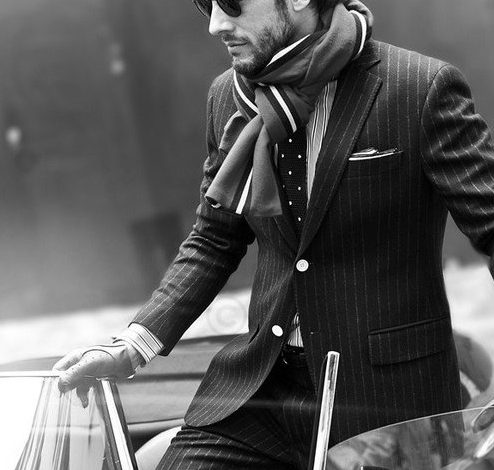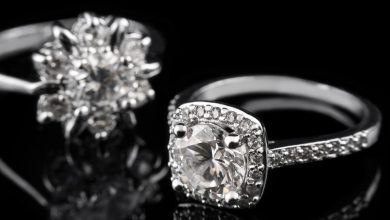Men’s Cashmere Scarves Guide

The scarf has been worn since the times of ancient Rome, where it was called sudarium, which means “fabric for sweat”. Scarves were used in Rome to protect the neck from contamination — men often fastened a piece of fabric to their waist or threw it around their neck, especially in the heat. Over time, scarves began to be worn for various occasions, both for hygiene reasons and as an element of demonstrating belonging to the elite of society, because the color and texture determined the status of the owner of the cashmere scarves.
By the third century BC, spectacular and popular Roman scarves reached China, where they were widely used by the terracotta army of the Qin Shi Huangdi dynasty as a distinctive sign on the uniform to distinguish the ranks of soldiers. By the end of the XIX century, scarves had come a long way from an elite accessory to a universal haberdashery product available to all classes. Since then, scarves have become popular all over the world.
Nowadays, men wear scarves at different times of the year: both as an additional, but effective protection from the cold in winter, and as an element of style in the warm season. Especially popular are not monophonic, but multicolored and even multi-textural scarves that can be worn both for an official event and just for an informal exit.
TYPES OF SCARVES
There are many styles and shapes of scarves, colors, and patterns made of various materials. We present to your attention the main categories of men’s scarves.
UNOFFICIAL / WINTER SCARF
The thickest scarf. It is chosen mainly for protection from the cold and to a lesser extent for beauty. At the same time, winter scarves come in different colors and patterns, often knitted, and non-woven. They are made mainly from sheep’s wool.
A SCARF FOR EVERYDAY
The most extensive group of scarves that should serve the owner, providing warmth and a stylish appearance. Unlike thick winter scarves, they mostly have a woven structure. It is made of cashmere, alpaca or merino wool.
OFFICIAL EVENING SCARF
Such a scarf is often worn with an evening suit-a tuxedo or tailcoat, it has a fringe, is rectangular in shape and is made of silk satin, most often black or white, as well as their combinations. The fringe is often formed by hand, and the scarf itself, unlike the others, is not tied, but simply thrown over the shoulders, sometimes thrown over the shoulder.
SUMMER SCARF
Created specifically as a stylish accessory, such a scarf is often made of linen, cotton or silk of different colors and textures and is used precisely as an accessory, not for protection from cold, rain or snow. It is worn mainly to an informal set.
MATERIALS
What the scarf is made of determines its thermal properties, how pleasant it will be to wear it and how long it will last you.
SHEEP’S WOOL (WOOL)
When the label of your scarf says ” wool”, it means that it is made of sheep wool. This scarf will last a long time, but it does not differ in special softness. This is the most common version of the scarf.

CASHMERE (CASHMERE)
Exquisitely soft and luxurious wool – cashmere-is made from the finest undercoat of the Kashmiri goat. From each animal, you can get only 150-200 grams of fluff per year, and this will be enough for one scarf. Unlike other materials, cashmere becomes softer to the touch over time. At the same time, cashmere will easily and naturally protect you even from serious cold weather, being very pleasant to the body. Cashmere is often used in combination with wool, which seriously reduces the price of the product.
ALPACA (ALPACA)
Alpaca is a valuable material made of llama wool. This wool is valued much higher than sheep wool and holds heat better, since the villi are hollow and have air voids. This scarf will be warm and soft. In addition, lanolin, which is present in wool or cashmere, is not found in alpaca wool, so this yarn will not be an allergen for people who are sensitive to wool fabrics and animal hair in general.
SILK (SILK)
This is a natural fiber collected from the cocoons of the silkworm. Silk is one of the most elegant textures in the world, the basis of a wide variety of high-quality accessories, including neck ones. When buying a bow tie, a neckerchief or a tie, it is worth looking for one hundred percent silk. Today, silk is often imitated, but this is basically impossible. The difference will be noticeable. Natural silk can be shiny or matte, but it always looks luxurious and refined. As for scarves, silk patterns perfectly complement an evening set and even a tailcoat.
COTTON (COTTON)
Not often found among practical scarves, cotton products are light and delicate, which makes them indispensable in thermal climatic zones, because they “breathe”. Cotton is an inexpensive, versatile and very relevant material for a scarf today. A cotton scarf is suitable both for people who prefer the casual style, and for those who want to bring individuality to their somewhat monotonous business sets.

LINEN (LINEN)
Flax, which has a vegetable origin, is undoubtedly the lightest and most breathable fabric for fashionable scarves. Flax is familiar to us from summer suits, light trousers and shirts, as well as the famous Irish handkerchiefs that are worn in the breast pocket of a jacket. In a warm climate, nothing can compare with linen scarves. In addition to the light cooling effect, flax also protects your skin.
HOW TO CARE FOR A SCARF
Scarves are quite unpretentious in care. The only point: you should not wash scarves in the washing machine, even if it is the latest model with a delicate cycle and a program for cashmere. Either take the scarves to the dry cleaners, or wash them by hand using liquid soap. Gently squeeze out the water without twisting the scarf. This way it will not stretch and lose its shape.





